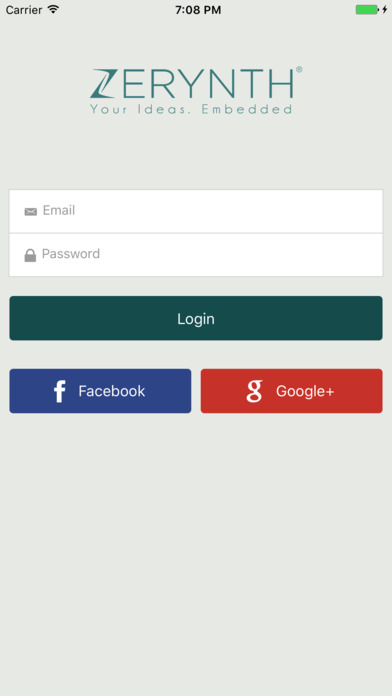
Zerynth App app for iPhone and iPad
Developer: Kinzica Ventures LLC
First release : 30 Mar 2017
App size: 17.87 Mb
Zerynth provides an easy to use, professional and performant development suite for the cross-platform and high level design of interactive objects, artistic installations, and internet/cloud connected devices.
The Zerynth App is a ready to use mobile app that acts as an interface for all the Zerynth powered objects. It needs to be installed on a smartphone or tablet and it will become the interface of all the network powered Zerynth objects.
Interactive objects or artistic installations, but also controlled IOT devices need a proper interface. Simple character LCDs and buttons are useful but nowadays considered obsolete. Rather a device with a mobile interface is more and more appreciated. That is the reason why a ready to use App has been integrated into the Zerynth suite.
When launched the Zerynth App gives the user the possibility to monitor and controll all the Zerynth devices linked to the user account. The App will become the interface for each one of them.
Zerynth is a powerful, easy and affordable way to develop innovative devices and applications based on 32-bit micro-controllers (like Arduino Due, Arduino Zero, ESP8266, ST Nucleo F401RE, UDOO, Particle Core, Particle Photon and many other professional and prototyping boards) combined with other state-of-the-art sensors and actuators, and expansion boards. It enables fast prototyping with bleeding-edge boards and components that can quickly be transformed into final designs. Programming examples and reference designs for many applications are provided and they help designers to make the transition from prototype to final product even smoother.
The Zerynth App interfaces are based on HTML 5 templates that can be updated directly in the IDE and transferred to the remote backend. All the logic of interaction between the Zerynth object and the Zerynth App is written in Python, while the UI is specified in HTML and Javascript; this way it is possible to build mobile controlled objects without writing any iOS code.
Any data collected or generated by Zerynth powered devices (i.e. room temperature, room light and sound level, etc.) can be shown on mobile by sending an event (and event push notifications!) from Python to the App. The communication also happens the other way round with the App sending events to the Python script which in turn can execute functions. Therefore the App can also work as a remote controller, by specifying in the Python script which event triggers a specific callback (e.g. a switch button in the App can turn a led on and off).



